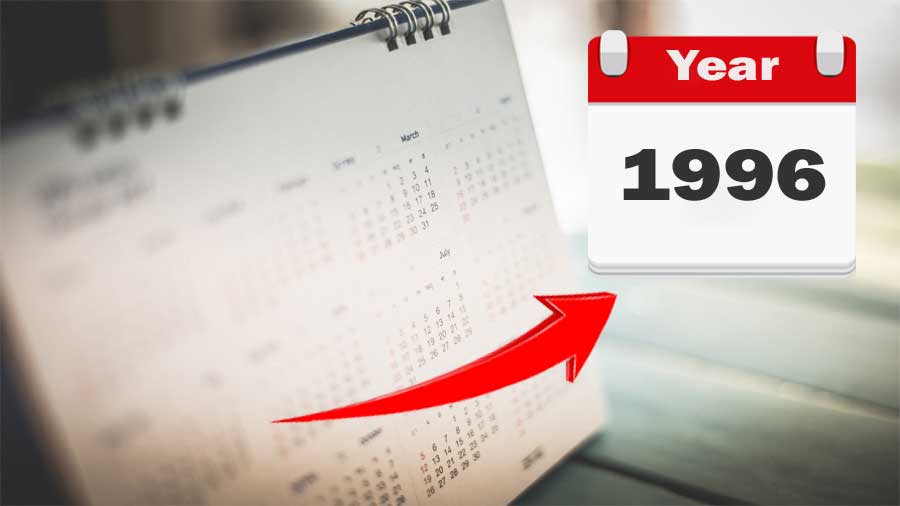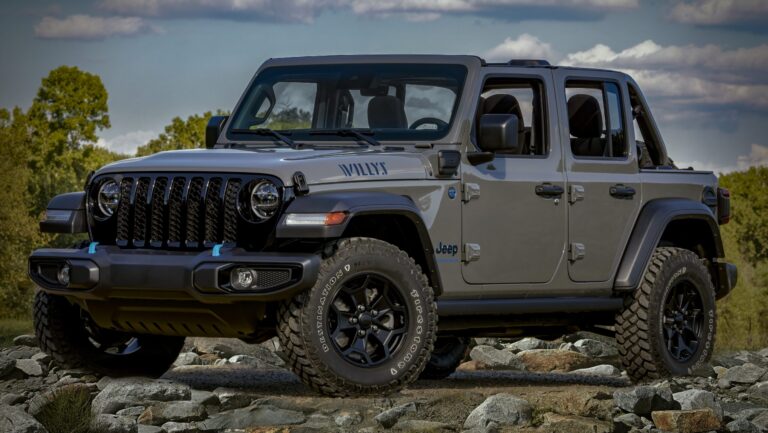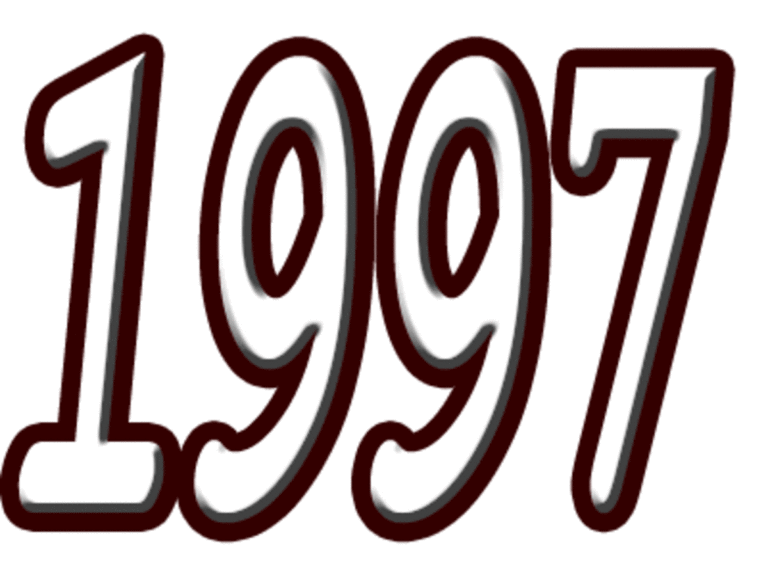1996 Jeep Cherokee Country For Sale: A Comprehensive Guide to Owning a Legend
1996 Jeep Cherokee Country For Sale: A Comprehensive Guide to Owning a Legend /jeeps.truckstrend.com
Introduction: The Enduring Allure of the 1996 Jeep Cherokee Country
In the annals of automotive history, few vehicles command the same level of cult following and respect as the Jeep Cherokee (XJ generation). Among its many iterations, the 1996 Jeep Cherokee Country stands out as a particularly desirable model, representing a sweet spot of rugged capability, surprising comfort, and timeless design. More than just a used SUV, a 1996 Jeep Cherokee Country for sale is an invitation to own a piece of automotive legend – a vehicle renowned for its bulletproof inline-six engine, robust unibody construction, and unparalleled versatility.
1996 Jeep Cherokee Country For Sale: A Comprehensive Guide to Owning a Legend
For those in the know, the XJ Cherokee, produced from 1984 to 2001, is celebrated for its compact size, solid axles, and exceptional off-road prowess. The "Country" trim, specifically, offered a blend of the XJ’s utilitarian nature with a touch more refinement and creature comforts, making it equally adept at navigating city streets, highway commutes, or the most challenging trails. Its unique two-tone paint options, distinctive wheels, and upgraded interiors provided a sophisticated yet still rugged aesthetic that continues to appeal to enthusiasts and practical drivers alike.
This comprehensive guide aims to arm prospective buyers and curious enthusiasts with all the essential information needed to understand, evaluate, and ultimately acquire a 1996 Jeep Cherokee Country. We’ll delve into its specific features, what to look for during an inspection, common challenges, and why this particular model remains a smart and rewarding investment in an era of increasingly complex vehicles.
The Enduring Appeal of the XJ Cherokee: A Design Masterpiece
The XJ Cherokee’s enduring popularity stems from a confluence of factors, chief among them its engineering simplicity and robust build quality. Unlike many modern SUVs, the XJ was designed with a unibody construction, offering a lighter yet surprisingly rigid platform. Paired with its legendary 4.0-liter "Power Tech" inline-six engine, the XJ delivers a perfect balance of power and reliability that is hard to find in today’s market.
The 4.0L I6 engine is arguably the heart of the XJ’s legend. Known for its remarkable longevity and ability to withstand significant abuse, it’s not uncommon to find these engines still running strong past 200,000 or even 300,000 miles with proper maintenance. This engine, combined with either the robust AW4 automatic transmission or the less common AX-15 manual, provides a drivetrain that is both durable and easy to service.
Furthermore, the XJ’s compact dimensions and excellent approach/departure angles make it incredibly agile on trails, while its solid front and rear axles (Dana 30 front, Chrysler 8.25 or Dana 35 rear) offer superior articulation and durability compared to independent suspension systems found in many contemporary SUVs. This combination makes the XJ a highly sought-after platform for off-road enthusiasts who appreciate its ease of modification and vast aftermarket support.
Decoding the "Country" Trim Level: Comfort Meets Capability
The 1996 Jeep Cherokee lineup featured several trim levels, each catering to different preferences. The "Country" trim was positioned as a more upscale offering than the base "Sport" but typically less luxurious than the "Limited." It aimed to provide a comfortable daily driver experience without sacrificing the XJ’s core ruggedness.

Key features that distinguished the 1996 Cherokee Country often included:
- Exterior: Distinctive two-tone paint schemes (e.g., green with gold lower cladding), specific alloy wheels, body-colored fender flares, and a standard roof rack. Some models also came with fog lights and a tow package.
- Interior: Upgraded cloth or leather seating options (often in tan or grey), power windows, power door locks, power mirrors, cruise control, a tilt steering column, an overhead console with a compass and temperature display, and improved sound insulation. Air conditioning was standard, a highly desirable feature.
- Drivetrain: While most XJs came with the NP231 "Command-Trac" part-time 4WD transfer case, many Country models were equipped with the NP242 "Selec-Trac" system. The NP242 offers the best of both worlds: 2WD, part-time 4WD (for off-road), and a full-time 4WD mode (ideal for slippery pavement and varied conditions). This full-time option is a significant benefit for those seeking year-round traction.

The "Country" trim, therefore, appeals to buyers who desire the legendary XJ performance and durability but also appreciate a more refined interior and exterior aesthetic, making it a versatile choice for both adventure and everyday life.
What to Look For When Buying a 1996 Jeep Cherokee Country: A Buyer’s Checklist
Acquiring a 28-year-old vehicle requires a discerning eye and a thorough inspection. While the 1996 XJ Cherokee is robust, age and past neglect can take their toll. Here’s a comprehensive checklist for potential buyers:
-
Rust Inspection (Critical): This is the number one killer of XJs.
- Rocker Panels: Check thoroughly for bubbling paint, holes, or Bondo.
- Floorboards: Inspect both front and rear from inside and underneath. Lift carpets if possible.
- Rear Quarter Panels: Especially around the wheel wells and behind the rear wheels.
- Frame Rails/Unibody Stiffeners: Look along the length of the vehicle’s underside for any significant rust or damage.
- Door Sills and Hatch Area: Common spots for moisture to collect.
- Subframe/Mounting Points: Check suspension and steering component mounting points for integrity.
-
Engine & Drivetrain (The Heart):
- 4.0L I6 Engine: Listen for unusual noises (knocking, ticking, excessive valvetrain noise). Check for oil leaks, especially from the valve cover, oil filter adapter, and rear main seal. While a minor rear main seal weep is common and often tolerable, significant leaks indicate more urgent attention.
- Cooling System: Inspect the radiator for leaks or damage, check the coolant reservoir for proper level and clarity (no milky or sludgy appearance). Ensure the electric fan engages when the A/C is on or when the engine gets hot. Overheating is a common XJ issue if neglected.
- Transmission (AW4 Automatic): Check fluid level (pink/red, not burnt or dark). Shifts should be smooth, without harsh jerking or slipping. Test all gears, including reverse.
- Transfer Case (NP231/NP242): Test all modes (2WD, 4H, 4-Full Time if NP242, 4L). Ensure it engages smoothly without grinding. Check for leaks around the output shafts.
- Differentials: Check for leaks around the covers and pinions. Listen for whining or clunking noises during a test drive, which could indicate worn gears or bearings.
-
Suspension & Steering:
- Bushings & Ball Joints: Inspect rubber bushings on control arms, sway bars, and track bar for cracks or wear. Check ball joints for play by lifting the front wheels and wiggling them.
- Tie Rod Ends/Drag Link: Look for worn boots and excessive play.
- Steering Box: Check for excessive play in the steering wheel (more than an inch or two before wheels respond). Look for leaks.
- Shocks & Springs: Check for leaks on shocks and ensure the vehicle sits level without excessive sag.
-
Electrical System & Interior:
- All Lights: Headlights (high/low), taillights, brake lights, turn signals, interior lights.
- Power Accessories: Test all power windows (notorious for slow operation or failure), power locks, power mirrors, cruise control, and A/C (does it blow cold?).
- Gauges: Ensure all dashboard gauges (oil pressure, temperature, voltage, fuel) are functional and read correctly.
- Headliner: Sagging headliners are almost universal in XJs; it’s a common cosmetic fix.
- Seats & Upholstery: Check for rips, tears, and overall wear.
- Dashboard: Look for cracks, especially common above the instrument cluster or on the passenger side.
-
Tires & Brakes:
- Tire Condition: Check tread depth and even wear. Look for dry rot on the sidewalls.
- Brakes: Test pedal feel (should be firm, not spongy). Listen for grinding or squealing. Check rotors for deep grooves and pads for wear.

Common Challenges & Practical Solutions
While the XJ is incredibly reliable, certain issues are common due to age and design. Knowing them helps in evaluation and budgeting for future ownership:
- Cooling System Overhaul: Many XJs run hot, especially in traffic. Upgrading to an all-aluminum radiator, replacing the water pump, thermostat, and hoses, and ensuring the electric fan works correctly are common and highly recommended preventative measures.
- Oil Leaks: The rear main seal is a frequent culprit. While replacement is labor-intensive, it’s a known fix. Valve cover gaskets are easier to replace.
- Power Window Motors: These often fail or become sluggish. Replacements are readily available and a relatively straightforward DIY.
- Headliner Sag: An easy cosmetic fix. Kits are available, or a local upholstery shop can re-glue the fabric.
- Rust Mitigation: For minor surface rust, wire brushing and rust encapsulating paint can prevent further spread. For structural rust, professional welding is often required.
- Steering Play: Often addressed by replacing worn tie rod ends, drag link, track bar, or a steering box adjustment/replacement.
The Value Proposition: Why a 1996 Country is a Smart Buy
Despite their age, 1996 Jeep Cherokee Country models continue to hold their value remarkably well, and in many cases, are appreciating. Here’s why it’s a smart purchase:
- Affordability: Compared to new SUVs with similar capabilities, an XJ is significantly more affordable to acquire.
- Ease of Maintenance & Parts Availability: Due to its popularity and long production run, parts are abundant and relatively inexpensive, both OEM and aftermarket. Its mechanical simplicity makes it a great vehicle for DIY enthusiasts.
- Strong Aftermarket Support: Whether you want to lift it, add bigger tires, or improve its off-road prowess, the aftermarket is flooded with options for the XJ.
- Versatility: It can serve as a dependable daily driver, a weekend adventure vehicle, a dedicated off-roader, or a practical utility vehicle.
- Classic Status: The XJ is increasingly recognized as a classic, particularly well-preserved examples. This means its value is likely to hold or even increase over time, unlike most modern vehicles.
Tips for a Successful Purchase
- Set a Realistic Budget: Beyond the purchase price, factor in potential immediate repairs, routine maintenance, and any desired upgrades.
- Get a Pre-Purchase Inspection (PPI): Even if you’re mechanically inclined, a professional mechanic specializing in Jeeps or older vehicles can spot issues you might miss. It’s money well spent.
- Review Maintenance Records: A well-documented service history is a strong indicator of a cared-for vehicle.
- Negotiate Based on Condition: Don’t be afraid to negotiate the price, especially if you’ve identified issues during your inspection or PPI.
- Understand Local Regulations: Be aware of any emissions testing or older vehicle registration requirements in your area.
Price Table: 1996 Jeep Cherokee Country For Sale (Hypothetical Listing)
This table provides an example of a typical listing for a 1996 Jeep Cherokee Country, including common details and a realistic price range based on market conditions for a well-maintained example.
| Feature | Details |
|---|---|
| Vehicle | 1996 Jeep Cherokee Country (XJ) |
| Mileage | 185,000 Miles (Well-maintained for age) |
| Engine | 4.0L "Power Tech" Inline-6 Cylinder |
| Transmission | AW4 4-Speed Automatic |
| Drivetrain | Selec-Trac NP242 Transfer Case (2WD, 4WD Full-Time, 4WD Part-Time, 4WD Low) |
| Exterior Color | Forest Green Metallic with Gold Lower Cladding |
| Interior Color | Tan Leather/Cloth Combination |
| Key Features | Power Windows/Locks/Mirrors, Cruise Control, A/C (Cold), Roof Rack, |
| Overhead Console w/ Compass & Temp, Original Alloy Wheels, Tow Package | |
| Condition | Exterior: Good for age, minor clear coat fade on hood, minimal surface rust on frame. |
| Interior: Clean, minor driver seat bolster wear, headliner recently replaced. | |
| Mechanical: Runs strong, no major leaks, recent cooling system service, new brakes. | |
| Asking Price Range | $7,500 – $9,500 USD (Based on excellent mechanicals and good cosmetic condition) |
| Location | [Hypothetical City], [Hypothetical State] |
| Contact | John Doe (555) 123-4567 |
| Notes | Well-loved and maintained, perfect for daily driving or light off-roading. Comes with service records. |
Note: Prices for 1996 Jeep Cherokee Country models can vary significantly based on mileage, overall condition, regional demand, and specific modifications. The listed price range is an estimate for a well-preserved, running, and driving example.
Frequently Asked Questions (FAQ) about the 1996 Jeep Cherokee Country
Q1: Is the 4.0L inline-six engine truly reliable?
A1: Absolutely. The 4.0L I6 is legendary for its durability and longevity. With proper maintenance (regular oil changes, cooling system care), it can easily exceed 200,000-300,000 miles.
Q2: What’s the main difference between the NP231 and NP242 transfer cases?
A2: The NP231 "Command-Trac" is a part-time 4WD system (2WD, 4H Part-Time, 4L). The NP242 "Selec-Trac," often found in Country models, adds a "4WD Full-Time" mode, which can be used on pavement, offering better traction in mixed conditions like rain or light snow without binding.
Q3: What are the most common rust spots to check on a 1996 XJ?
A3: Pay close attention to the rocker panels, front and rear floorboards, rear quarter panels (especially behind the rear wheels), and the frame rails/unibody stiffeners underneath the vehicle.
Q4: Are parts for a 1996 Jeep Cherokee still readily available and affordable?
A4: Yes, one of the biggest advantages of owning an XJ is the vast availability of both OEM and aftermarket parts. Most components are inexpensive and easy to find due to the vehicle’s popularity and long production run.
Q5: Can a 1996 Jeep Cherokee Country be a reliable daily driver?
A5: Definitely. Many XJ owners use them as daily drivers. With consistent maintenance and addressing any common age-related issues, they are incredibly dependable and comfortable enough for regular commuting.
Q6: What kind of fuel economy can I expect?
A6: The 4.0L I6 is not known for its fuel efficiency. You can generally expect around 15-18 MPG in combined city/highway driving, possibly less with larger tires or heavy modifications.
Q7: What’s a fair price for a 1996 Cherokee Country?
A7: Prices vary widely. A project vehicle needing significant work might be $2,000-$4,000. A decent, running and driving example could range from $5,000-$8,000. Exceptional, low-mileage, rust-free examples can fetch $9,000-$12,000+ or even more if highly modified or perfectly restored.
Conclusion: More Than Just a Vehicle, It’s an Experience
A 1996 Jeep Cherokee Country for sale isn’t just a transaction; it’s an investment in a lifestyle. This iconic SUV offers a rare blend of timeless design, legendary reliability, and unparalleled versatility that modern vehicles often lack. Its "Country" trim adds a layer of comfort and aesthetic appeal, making it a truly balanced package.
While purchasing an older vehicle always comes with its considerations, the XJ Cherokee’s robust nature and the abundance of available parts and knowledge make it a relatively low-risk venture for the prepared buyer. By performing a thorough inspection, understanding its common quirks, and appreciating its unique value proposition, you can confidently acquire a piece of automotive history that promises countless miles of adventure and dependable service. The 1996 Jeep Cherokee Country isn’t just transportation; it’s a statement, a project, and a loyal companion waiting for its next chapter.






